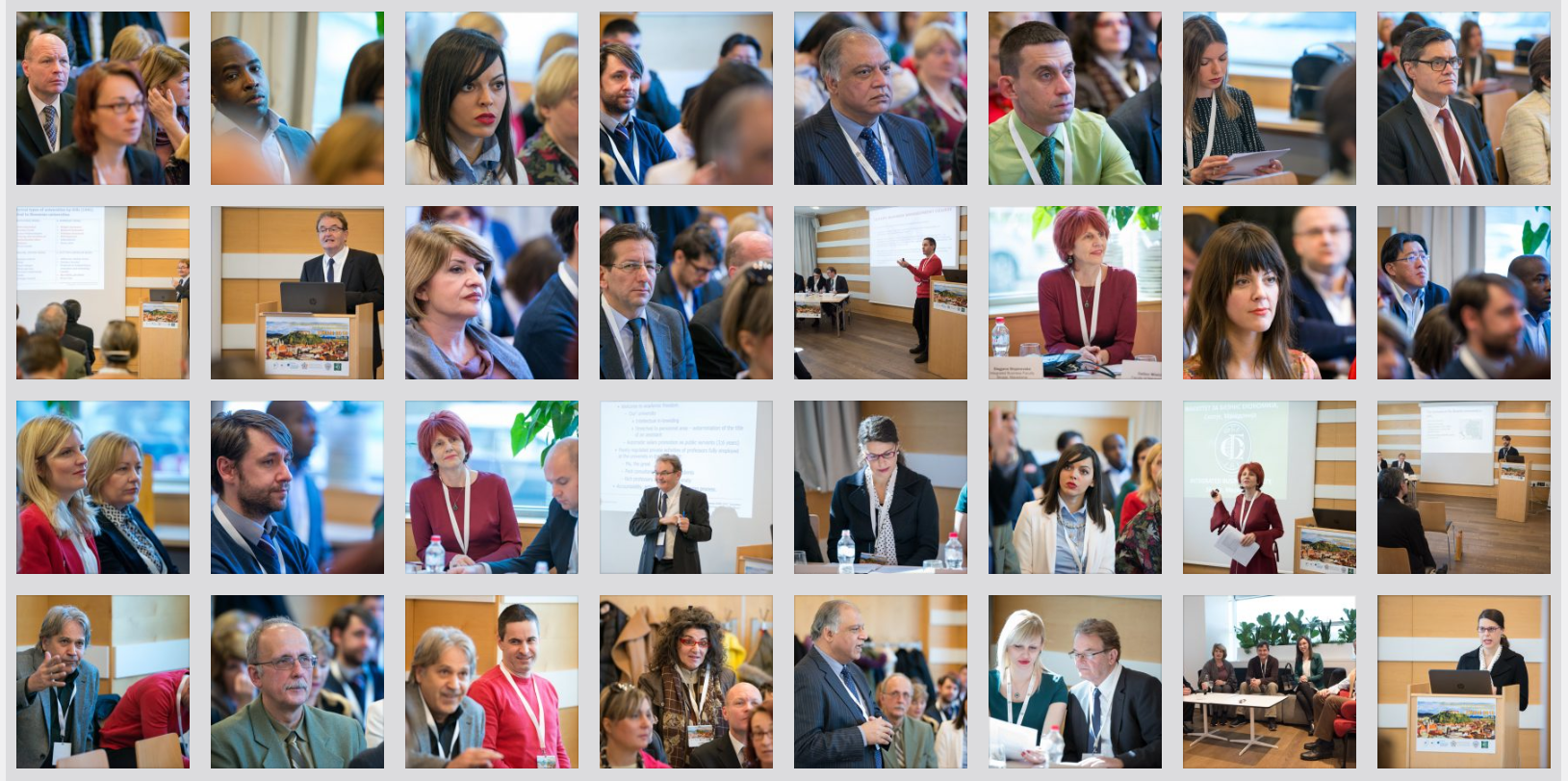Emiljan Karma – Catholic University Our Lady of Good Counsel, Faculty of Economic, Political and Social Sciences, Rruga Dritan Hoxha 23, 1064, Tirana, Albania
Keywords:
Exchange rate;
EURO / LEK;
ARDL Approach
Abstract: This study aims to identify the factors that contributed to the appreciation of the Albanian LEK against the EURO, given the increasing euroization of the Albanian economy. The study uses ARDL analysis and quarterly data from 2008Q1–2023Q3 to examine the primary influences on currency exchange rate variations, as per economic theory.
The study’s findings indicate that conventional economic variables have little impact on exchange rate variations. However, the study found that remittances and GDP do have a significant impact on the EUR/LEK exchange rate.
This study also leaves room to highlight the role of informality in explaining this phenomenon. Therefore, policymakers may need to intervene in this situation, through formal channel transactions (using financial institutions), which must be carried out in the LEK currency, and secondly, through a monetary intervention aimed at creating a more balanced EURO/LEK exchange rate.

Download full paper

8th International Scientific Conference – EMAN 2024 – Economics and Management: How to Cope With Disrupted Times, Rome, Italy, March 21, 2024, SELECTED PAPERS, published by: Association of Economists and Managers of the Balkans, Belgrade, Serbia; ISBN 978-86-80194-84-4, ISSN 2683-4510, DOI: https://doi.org/10.31410/EMAN.S.P.2024
Creative Commons Non Commercial CC BY-NC: This article is distributed under the terms of the Creative Commons Attribution-Non-Commercial 4.0 License (https://creativecommons.org/licenses/by-nc/4.0/) which permits non-commercial use, reproduction and distribution of the work without further permission.
REFERENCES
Ahmetaj, N., & Bejtja, M. (2019). Determinants of the Real Equilibrium Exchange Rate in Albania: An Estimation Based on the Co-Integration Approach. Journal of Finance and Risk Perspectives, 8(1), 84-94. https://doi.org/10.35944/jofrp.2019.8.1.005
Bajo-Rubio, O., & Berke, B. (2016). Fiscal policy and the real exchange rate: Some evidence from Spain. Working Papers 14-11, Asociación Española de Economía y Finanzas Internacionales.
Balkanweb. (2018). Zyrtarja e lartë e BSH: Arsyet e rënies së Euro-s dhe pse nuk ka vend për panik. Retrieved January 30, 2024, from https://www.balkanweb.com/zyrtarja-e-larte-e-bsh-arsyet-e-renies-se-euro-s-dhe-nuk-ka-vend-per-panik/#gsc.tab=0
Bank of Albania. (2023). Exchange rate archive. Retrieved January 22, 2024, from https://www.bankofalbania.org/Markets/Official_exchange_rate/Exchage_rate_archive/
Bank of Albania. (2023a). De-euroization package. Retrieved January 20, 2024, from https://www.bankofalbania.org/Financial_Stability/De-euroization_Package/
Biswas, S., & Dasgupta, B. (2012). Real exchange rate response to ınward foreign direct ınvestment in liberalized India. International Journal of Economics and Management, 6(2), 321-334.
Bordo, M. D., Choudhri, E. U., Fazio, G., & MacDonald, R. (2017). The real exchange rate in the long run: Balassa-Samuelson effects reconsidered. Journal of International Money and Finance, 75, 69-92. https://doi.org/10.1016/j.jimonfin.2017.03.011
Choudhri, E. U., & Khan, M. S. (2005). Real Exchange Rates in Developing Countries: Are Balassa-Samuelson Effects Present? IMF Staff Papers, 52(3), 387-409. https://doi.org/10.2307/30035969
Deda, Xh. (2023). Sa humbasin familjet nga renia e euros. Retrieved January 22, 2024, from https://intel.scantv.al/sa-humbasin-familjet-nga-renia-e-euros-rreth-4-mije-leke-ne-muaj-humbje-kush-merr-dergesa-nga-emigrantet/
Della Valle, G., Kota, V., Veyrune, R., Cabezon, E., & Guo, S. (2018). Euroization Drivers and Effective Policy Response. An Application to the Case of Albania. IMF Working Papers 2018/021, https://doi.org/10.5089/9781484338728.001
Fortuzi, Sh. (2015). Informal Economy and Money Laundering in Albania. International Journal of Economics, Commerce and Management, 3(10), 737 – 748.
Gantman, E. R., & Dabós, M. P. (2018). Does trade openness influence the real effective exchange rate? New evidence from panel time-series. SERIEs, 9(1), 91-113. https://doi.org/10.1007/s13209-017-0168-7
Gidey, H. T., & Nuru, N. Y. (2022). The effects of government spending shocks on real exchange rate in Ethiopia. Journal of Economic and Administrative Sciences, 38(4), 544-561. https://doi.org/10.1108/jeas-07-2020-0137
Gjokutaj, A., & Gjokutaj, E. (2023). Economic Growth in 2023 Challenged by Informality and Black Money. SSRN Electronic Journal. https://doi.org/10.2139/ssrn.4531305
Iavorschi, M. (2014). The Influence of Foreign Direct Investments and the Current Account of the Balance of Payments on the Evolution of the Lei/Euro Exchange Rate in Romania. Procedia Economics and Finance, 16, 448-457. https://doi.org/10.1016/s2212-5671(14)00824-7
IMF. (2003). Exchange Arrangements and Foreign Exchange Markets: Developments and Issues. Washington D.C, USA: IMF. https://doi.org/10.5089/9781589061774.083
Jakimova, T., Eliskovski, M., & Bedzeti Baftijari, A. (2022). Households’ euroization in the Republic of North Macedonia: Is it close to or far from the optimal levels? Working Papers 2022 – 02, National Bank of the Republic of North Macedonia.
Khan, M. K., Teng, J.-Z., & Khan, M. I. (2019). Cointegration between macroeconomic factors and the exchange rate USD/CNY. Financial Innovation, 5(1). https://doi.org/10.1186/s40854-018-0117-x
Khurshid, A., Kedong, Y., Cantemir Calin, A., & Khan, K. (2017). The Effects of Workers’ Remittances on Exchange Rate Volatility and Exports Dynamics – New Evidence from Pakistan, Romanian Economic Journal, 20(63), 29-52.
Kozmai, K. (2023). “Fear” of the free exchange rate – the case of Albania. Economicus, 22(1), 72–94.
Lane, P. R. (2022). Currency Pegs: A Euro Area Perspective. Retrieved February 5, 2024, from https://www.ecb.europa.eu/press/key/date/2022/html/ecb.sp221031~05b7e13e43.en.pdf?2d4b85231939ba63fa61b8bf7d2319b1
Lopez, H., Molina, L., & Bussolo, M. (2007). Remittances and the real exchange rate, Policy Research Working Paper Series 4213, The World Bank. http://hdl.handle.net/10986/7069
Miyamoto, W., Nguyen, T., & Sheremirov, V. (2019). The effects of government spending on real exchange rates: Evidence from military spending panel data. Journal of International Economics, 116, 144-157, https://doi.org/10.1016/j.jinteco.2018.11.009.
Narazani, E. (2013). A Micro-Level Perspective of Euroization in Albania. Balkan Observatory Working Papers, The Vienna Institute for International Economic Studies (WIIW), Vienna.
Nguyen, T. K. L., Thu-Trang, T. D., & Toan, N. B. (2022). Trade openness and real effective exchange rate volatility: The case of Vietnam. Banks and Bank Systems, 17(1), 150-160. https://doi.org/10.21511/bbs.17(1).2022.13
Nketiah, E., Adjei, M., Boamah, B., & Adu-Gyamfi, G. (2019). The Impact of Remittance on the Real Exchange Rate in Ghana. Open Journal of Business and Management, 7, 1862-1879. http://doi.org/10.4236/ojbm.2019.74128
Oleksiv, I., & Mirzoieva, D. (2022). Impact of Remittances on the Exchange Rate and Consumption: Evidence from Ukraine. Eastern European Economics, 60(5), 418-432. https://doi.org/10.1080/00128775.2022.2093751
Peel, D., & Taylor, M. P. (2002). Covered Interest Rate Arbitrage in the Interwar Period and the Keynes-Einzig Conjecture. Journal of Money, Credit, and Banking, 34(1), 51-75. https://doi.org/10.1353/mcb.2002.0033

